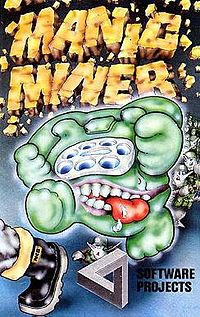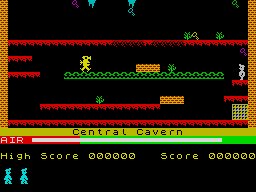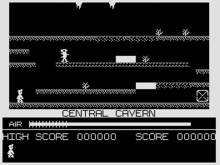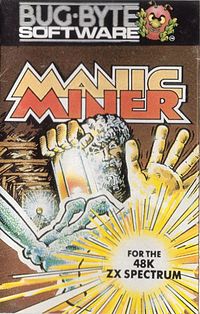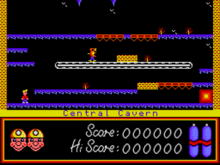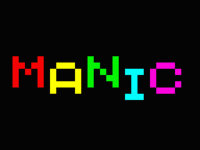Manic Miner
The digital 80's
I loved games, and in my infancy I used to be an "adult playing observer", passing hours watching people inserting 25 peseta coins for additional lifespan in Gauntlet, or trying to consume all Out Run's in-game melodies and the colorful USA-wide scroll. Defender, Space Invaders, Galaxian or Donkey Kong are the first ones I remember, full of charm, in bars, mini-golf resources, or swimming pools near León, with a delicious smell to tapas.
Manic Miner is a platform game originally written for the ZX Spectrum by Matthew Smith and released by Bug-Byte in 1983 (later re-released by Software Projects). It is the first game in the Miner Willy series and among the early titles in the platform game genre. The game itself was inspired by the Atari 800 game Miner 2049er. It has since been ported to numerous home computers and video game consoles.
At the time, its stand-out features included in-game music and sound effects, excellent playability, and colourful graphics, which were well designed for the graphical limitations of the ZX Spectrum. The Spectrum's video display allowed the background and foreground colours to be exchanged automatically without software attention and the "animated" load screen appears to swap the words Manic and Miner through clever manipulation of this feature. An homage to this loading screen appeared in one episode of the 2005 British sitcom Nathan Barley.
On the Spectrum this was the first game with in-game music, the playing of which required constant CPU attention and was thought impossible. It was cleverly achieved by constantly alternating CPU time between the music and the game (which accounts for the music's stuttery rhythm). The in-game music is In the Hall of the Mountain King from Edvard Grieg's music to Henrik Ibsen's play Peer Gynt. The music that plays during the title screen is an arrangement of The Blue Danube.
Keywords:
1983 in video gaming
Acorn Archimedes
Amiga
Amsoft
Amstrad CPC
Apple Macintosh
Atari 800
Atari ST
Attract mode
Attribute clash
BBC Micro
Bug-Byte
Cambridge Z88
Cartridge (electronics)
Commodore 16
Commodore 64
Commodore Amiga
Compact audio cassette
Computer & video games
Computer and video game music
Computing platform
Content delivery
Copyright
DOS
Digital media
Dragon 32
Dragon 32/64
Edvard Grieg
Floppy disk
Game Boy Advance
Golden Joystick Award
HP48
Henrik Ibsen
IBM PC
In the Hall of the Mountain King
Jet Set Willy
Linux
MSX
Manic Miner
Matthew Smith (games programmer)
Memotech MTX
Microsoft Windows
Miner 2049er
Miner Willy
Mobile phone
Mobile phones
MobyGames
Nathan Barley
Neo Geo Pocket Color
Nintendo 64
Open Directory Project
Orao (computer)
Oric 1
PMD 85
Peer Gynt
Penrose triangle
Platform game
PlayStation
Retro Gamer
Roller Coaster (video game)
SAM Coupé
Sinclair ZX81
Single player
Sir Lancelot (game)
Software Projects
The Blue Danube
Video game developer
Video game genres
Video game publisher
World of Spectrum
Xbox 360
Xbox Live Indie Games
Z-axis
ZX Spectrum
ZX81
Zune
Content extracted from Wikipedia, where you can find its license details.
Ignacio Javier Gómez Rodríguez (igjav). OS developer. Naive power.
